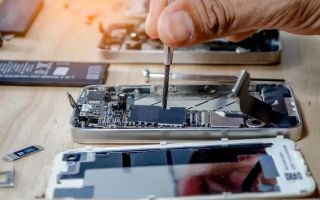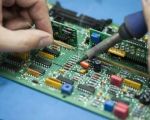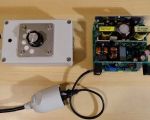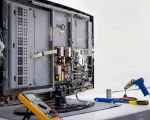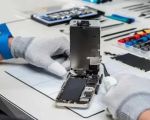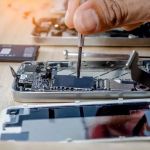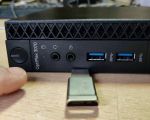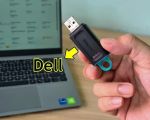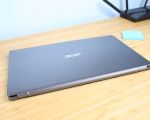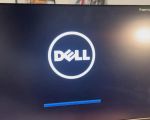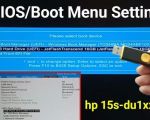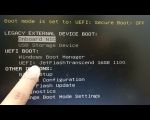How to Convert a Normal USB Drive into a Bootable USB: Step-by-Step Guide
- Understanding Bootable USB Drives
- Why Create a Bootable USB
- Tools Needed for Creating a Bootable USB
- Step-by-Step Guide to Create a Bootable USB
- Common Issues and Troubleshooting
1. Understanding Bootable USB Drives
A bootable USB drive is a portable storage device that contains an operating system or a recovery tool. It is used to boot a computer into a system for installation, repair, or system recovery. Unlike a regular USB drive that stores data, a bootable USB drive is specially formatted and contains a system image that can boot your machine directly from the USB.
Many people create bootable USB drives for various reasons, such as installing a new operating system, running a live OS, or performing system recovery tasks. If you're unsure about the concept, just think of it as a way to make your USB drive function similarly to a CD or DVD, but with the added convenience of faster speeds and easy portability.
2. Why Create a Bootable USB
There are several reasons why creating a bootable USB drive is incredibly useful:
- Installing or Reinstalling an OS: A bootable USB drive is often used to install operating systems like Windows, Linux, or macOS on a new or formatted computer. It’s an essential tool for tech-savvy individuals or IT professionals who need to perform OS installations or repairs on multiple computers.
- System Recovery: If your computer's operating system is corrupted or your system won't boot, a bootable USB can be used to recover your system or perform diagnostics and repairs.
- Convenience and Portability: A bootable USB is compact, portable, and easy to carry around. Unlike CDs or DVDs, which can be damaged easily, a USB drive is more durable and can be reused for multiple purposes.
- Faster than Optical Discs: Booting from a USB drive is generally faster than using a CD or DVD, reducing the time it takes to install or troubleshoot your system.
Given these benefits, learning how to convert a normal USB drive into a bootable USB is a valuable skill for anyone working with computers, whether you're troubleshooting, installing a new OS, or just want the flexibility of a portable system recovery tool.
3. Tools Needed for Creating a Bootable USB
Before you begin the process of converting your normal USB drive into a bootable USB, you'll need a few essential tools:
- A USB Drive: The first requirement is, of course, a USB drive. The size of the USB drive depends on the operating system or tool you want to make bootable. A minimum of 8GB is recommended for most operating systems.
- Operating System ISO File: You will need an ISO image of the operating system you wish to install. You can download official ISO files from websites like Microsoft (for Windows) or Linux distributions (such as Ubuntu).
- Bootable USB Creation Software: There are several free tools available for creating bootable USB drives. Some of the most popular include:
- Rufus: A fast and reliable tool for creating bootable USB drives.
- UNetbootin: Another tool popular for creating bootable USBs, especially for Linux distributions.
- Windows USB/DVD Download Tool: If you are using a Windows OS, this tool from Microsoft can be used to create a bootable USB.
Once you have the necessary tools, you are ready to move on to the process of creating your bootable USB drive.
4. Step-by-Step Guide to Create a Bootable USB
Now that you're ready, here’s a simple, step-by-step guide to help you convert a normal USB drive into a bootable USB:
- Download and Install Bootable USB Software: First, download and install one of the bootable USB creation tools mentioned earlier, such as Rufus or UNetbootin.
- Prepare Your USB Drive: Insert your USB drive into a USB port on your computer. Make sure there’s no important data on it, as it will be formatted during the process.
- Select the Operating System ISO: Launch the bootable USB tool and select the ISO file of the operating system or tool you want to create a bootable USB for.
- Choose the USB Drive: In the software, select your USB drive as the destination. Be careful to choose the correct drive to avoid accidental data loss.
- Start the Process: Click the “Start” button to begin the process. The tool will format your USB drive, copy the necessary files, and make it bootable. This process may take several minutes, depending on the size of the ISO and the speed of your USB drive.
- Test the Bootable USB: After the process is complete, you can test your bootable USB by restarting your computer and booting from the USB drive. You may need to change the boot order in your computer’s BIOS settings to boot from the USB drive.
Once you've followed these steps, you’ll have successfully created a bootable USB that can be used to install or repair your operating system.
5. Common Issues and Troubleshooting
While creating a bootable USB is a relatively straightforward process, you may encounter some issues along the way. Here are some common problems and troubleshooting tips:
- USB Drive Not Recognized: If your USB drive isn’t showing up during the boot process, make sure it is properly inserted and that your BIOS settings are correctly configured to boot from USB.
- Error Creating Bootable USB: If the bootable USB tool gives an error, check if the ISO file is corrupted or incomplete. Try re-downloading the ISO and restarting the tool.
- Bootable USB Won’t Boot: If the USB drive is not booting, ensure that the bootable USB was created with the correct boot sector and partition scheme. For Windows, make sure the USB is set up with the GPT or MBR partition depending on your system's architecture.
By following these troubleshooting tips, you can resolve most issues and successfully create a bootable USB drive that meets your needs.






